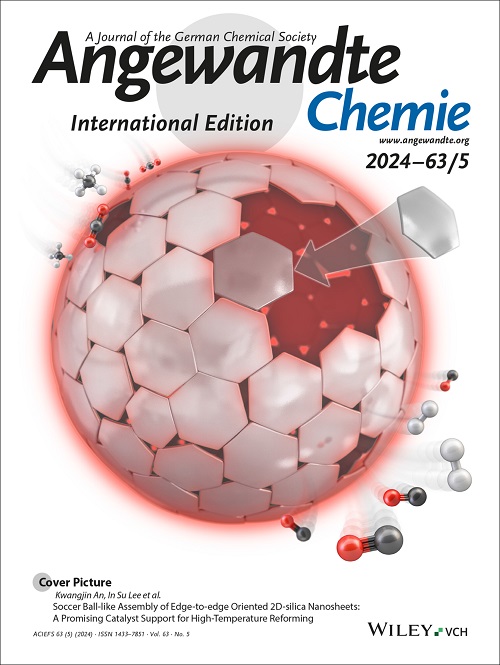Heterointerfacial Charge Modulation of p‐Type Covalent Organic Frameworks on Graphene Achieving High‐Performance Cl‐ Ion Storage with Ultralong Cycling Life
IF 16.9
1区 化学
Q1 CHEMISTRY, MULTIDISCIPLINARY
引用次数: 0
Abstract
The charge and ion transport dynamics, storage capacity, and cycling performance of Faradaic Cl‐ ion storage electrodes have recently constrained advancements in supercapacitor (SC) and capacitive deionization (CDI). Herein, a high‐performance p‐type COF (TAPA‐COF)‐based Cl‐ ion storage material (TAPArGO) with exceptional cycling stability was synthesized via an in situ condensation reaction utilizing graphene as a conductive substrate. The interfacial coupling involving graphene and TAPA‐COF increases the interfacial electron density, boosting local charge accumulation and Cl‐ ion storage capacity. Additionally, the dual conductive strategy of incorporating graphene and extended π‐electron delocalization of TAPA‐COF enhances the redox kinetics, while the triphenylamine N redox centers and flexible graphene network improve cycling stability. Consequently, the Cl‐ ion asymmetric SC employing the TAPArGO‐75 positive electrode achieves a specific energy output of 52.4 Wh kg‐1 at 950 W kg‐1, with exciting cycling durability retaining 96.8% of the initial capacity after 100,000 cycles. Furthermore, the hybrid CDI system based on the TAPArGO‐75 positive electrode demonstrates a specific adsorption capacity of 55.0 mg g‐1, along with remarkable cycling desalination/regeneration ability (99.8% after 200 desalination/regeneration cycles). This study expands the application potential of COF‐based materials for high‐performance Cl‐ ion storage.石墨烯上p型共价有机骨架的异质界面电荷调制实现超长循环寿命的高性能Cl离子存储
法拉第Cl -离子存储电极的电荷和离子传输动力学、存储容量和循环性能最近限制了超级电容器(SC)和电容去离子(CDI)的发展。本文利用石墨烯作为导电衬底,通过原位缩合反应合成了一种高性能的p型COF (TAPA - COF)基Cl -离子存储材料(TAPArGO),该材料具有优异的循环稳定性。石墨烯和TAPA - COF的界面耦合增加了界面电子密度,促进了局部电荷积累和Cl -离子存储能力。此外,结合石墨烯和扩展π -电子离域的TAPA - COF的双导电策略增强了氧化还原动力学,而三苯胺N氧化还原中心和柔性石墨烯网络提高了循环稳定性。因此,采用TAPArGO‐75正极的Cl -离子非对称SC在950 W kg‐1时实现了52.4 Wh kg‐1的比能量输出,在10万次循环后具有令人兴奋的循环耐久性,保持了初始容量的96.8%。此外,基于TAPArGO‐75正极的混合CDI系统显示出55.0 mg g‐1的比吸附量,以及出色的循环脱盐/再生能力(200次脱盐/再生循环后99.8%)。本研究拓展了COF基材料在高性能Cl离子存储方面的应用潜力。
本文章由计算机程序翻译,如有差异,请以英文原文为准。
求助全文
约1分钟内获得全文
求助全文
来源期刊
CiteScore
26.60
自引率
6.60%
发文量
3549
审稿时长
1.5 months
期刊介绍:
Angewandte Chemie, a journal of the German Chemical Society (GDCh), maintains a leading position among scholarly journals in general chemistry with an impressive Impact Factor of 16.6 (2022 Journal Citation Reports, Clarivate, 2023). Published weekly in a reader-friendly format, it features new articles almost every day. Established in 1887, Angewandte Chemie is a prominent chemistry journal, offering a dynamic blend of Review-type articles, Highlights, Communications, and Research Articles on a weekly basis, making it unique in the field.

 求助内容:
求助内容: 应助结果提醒方式:
应助结果提醒方式:


